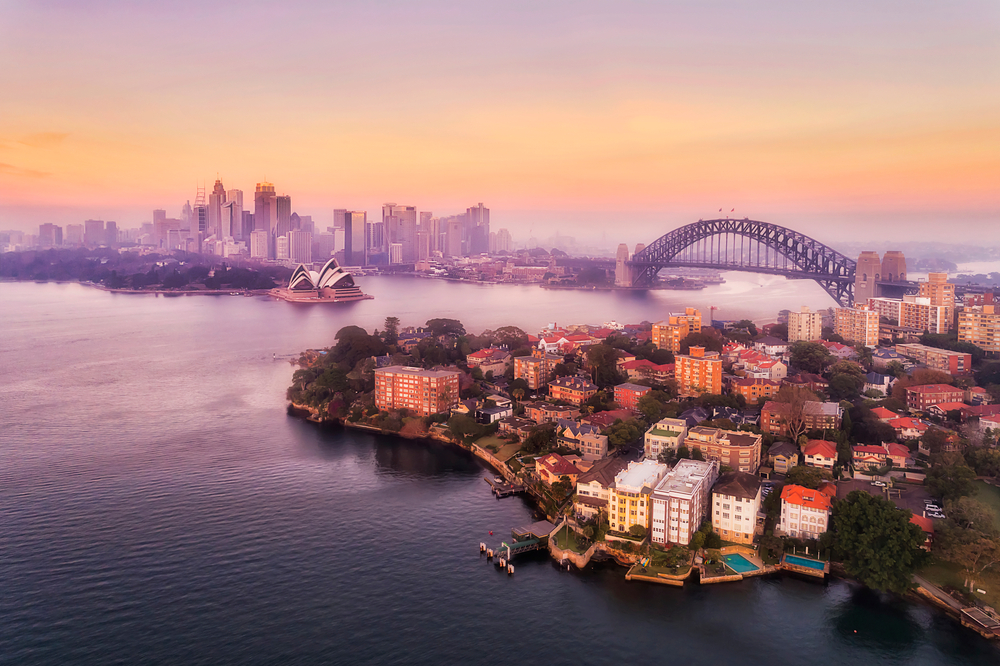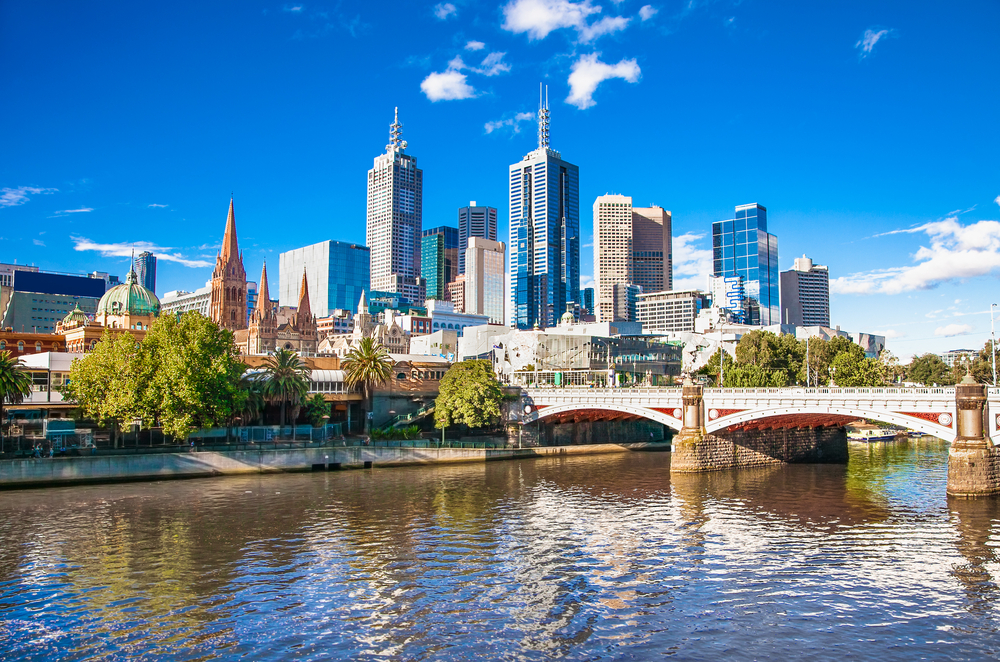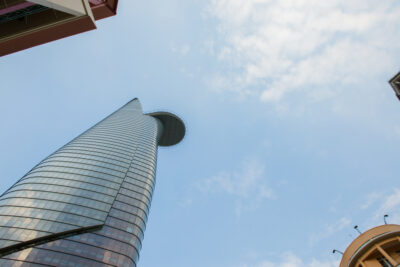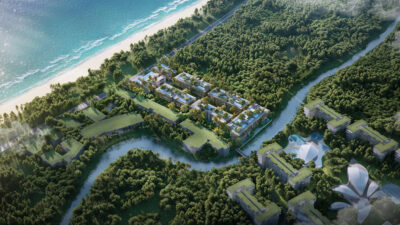Why everyone wants a piece of Australia’s hot real estate market
A housing crisis deepens in Australia where foreigners and locals are vying for lucrative property investments as well as roofs over their heads

Population growth, alongside a chronically undersupplied dwelling stock, has exacerbated a housing crunch in Australia.
Queues outside open home inspections went viral on social media as a once-in-a-lifetime demographic shift played out in the residential market.
Last year, the proportion of overseas-born residents in Australia exceeded 30% for the first time since 1893. At the same time, home values in the country-cum-continent of almost 27 million soared by 8.1 percent, rebounding from a 4.9 percent drop in 2022, according to real estate data provider CoreLogic. Auctions in capital cities meanwhile recorded an annual clearance rate of 64.9 percent, up from 61.2 percent in the previous year.
This disconnect between supply and demand is “trumping the downside pressures from interest rates, high inflation, and low sentiment,” according to CoreLogic research director Tim Lawless. Having undergone 13 hikes since 2022, the country’s cash rate stood at 4.35 percent, a 12-year high.
The median home value underwent 16 consecutive months of growth to land at AUD785,556 (USD517,390) in May. That month, the number of listings in state capitals fell 16 percent below the previous five-year average.
Brisbane, where listings were 34 percent below the five-year average, is now the country’s second-most expensive state capital after Sydney, surpassing Canberra. In Perth and Adelaide, mid-sized cities with listings more than 40 percent below the average, home values rose annually by 22 percent and 14.4 percent, respectively.

After welcoming 494,000 people in 2023, Australia’s overseas-born population has grown to 8.2 million. In the first quarter of 2024, the share of foreign buyers in new housing markets hovered at 10 percent, a six-year high, according to the National Australia Bank (NAB).
The Great Australian Dream of home ownership is now shared by people born in India, China, Nepal, and the Philippines. These nations contributed the most to Australia’s population growth, in that order, between 2013 and 2023.
I genuinely believe Australia is now the top destination globally. We are not anywhere close to all the war areas. There are just loads of wealthy people looking at Australia as a safety net in this crazy world
“Asian buyers are a driving force for a lot of demand of homes still,” says Peter Li, general manager of Sydney-based real estate firm Plus Agency. “In Asian buyers’ minds, they don’t just want to rent—they want to own the home.”
Around 5,200 millionaires relocated to Australia in 2023, compared to just 2,100 for the US, according to migration consultancy Henley & Partners.
“I genuinely believe Australia is now the top destination globally,” says Benson Zhou, state head for Asia markets and director at the consultancy Savills Australia. “We are not anywhere close to all the war areas, given what’s happening in this crazy world. There are just loads of wealthy people looking at Australia as a safety net.” For most of 2023, China was the leading source of approved residential property investments, injecting AUD1.1 billion into the country in the second quarter alone, according to the Foreign Investment Review Board (FIRB).
Li, however, predicts Chinese interest to decline by 2025 due to China’s weakened economy. Affluent Chinese buyers, already burdened with capital controls, also reckon with this year’s elimination of the Significant Investor Visa (SIV), a long-favoured route to Australian residency.

“On the other hand, we see increasing demand from Southeast Asia,” says Li. “Overall foreign buyer demand will remain similar, but the source countries will change.”
Vietnam, Indonesia, and Singapore ranked among Australia’s top 10 sources of approved residential investments last year.
While prices skyrocketed, the volume of transactions lagged, suggesting the dominance of post-pandemic upgraders and financially capable buyers in the market. The Housing Industry Association noted a 34 percent annual decline in nationwide transactions up to October while digital platform PEXA recorded an 18.6 percent drop in property settlements in 2023.
“The prices went high because people are swapping homes,” says Li, whose agency completed more than AUD305 million in transactions last year. “They are the people who don’t get affected by the interest rate that much because they’re very cash-strong or asset-strong.”
This cohort is likely able to absorb the increased fees, surcharges, duties, and taxes levied on foreign nationals in 2024. Since April, foreign investment fees for the purchase of existing homes have tripled, turning non-residents towards new developments.
“In the long run, Australia will be the safest hub for a lot of money to be parked in,” says Li. “But if you’re expecting that you can double your money in two years, maybe Australia is not your best choice because the prices are already so high…I don’t think you’re going to make as much capital gain, compared to selected countries, as when it was on a bull run.”

Housing stress disproportionately affects first-time homebuyers and low-income migrants. A recent report by CoreLogic and ANZ bank revealed that the proportion of income needed to cover median rents hit a record high of 32.2 percent in March while servicing a new mortgage reached a peak of 48.9 percent.
The Albanese government seeks to temper demand by halving net migration intake from 528,000 in 2023 to 260,000 by 2025. Also, starting in 2024, the government is building 1.2 million homes over the next five years under the National Housing Accord.
With developers delaying or foregoing projects altogether, dwelling approvals last year sat at around 162,200, a decade low, according to NAB.
Redistributing existing stock, instead of building anew, could remedy the supply-demand mismatch. Increasing the average household size, which has dwindled to 2.5 individuals since the 1980s, to 2.8 individuals would house the populace in 1.2 million fewer dwellings, according to Reserve Bank of Australia chief economist Sarah Hunter.
But as birth rates fall, Australia simply cannot halt migration, with population growth “the only thing standing between Australia and recession,” according to Callam Pickering, an economist at job site Indeed. Australia narrowly avoided one in Q1 2024 as the economy posted its slowest quarterly growth since 2021.
Peopling Australia, with its multicultural mystique intact, would ostensibly require little effort. The Australian government has sailed through various socioeconomic headwinds in the past via a competent migration policy.
“If something didn’t work, they just keep the migrants’ tap up,” says Zhou. “The smart thing about the government is they know there’ll be millions of people wanting to get an Australian visa.”
This article was originally published on asiarealestatesummit.com. Write to our editors at [email protected].
Recommended
Meet the sustainability guru making green living a reality for property seekers
PropertyGuru Group’s Cecile Corda has helped launch innovative new programs to help property seekers make more considerated choices
Vietnam’s property market bounces back after scandalous downturn
Vietnam’s property scene has experienced its most traumatic period with corruption scandals sending the market into freefall
Why everyone wants a piece of Australia’s hot real estate market
A housing crisis deepens in Australia where foreigners and locals are vying for lucrative property investments as well as roofs over their heads
In Phuket, a wellness paradise is found
Gardens of Eden creates opulence of epic proportions on Phuket’s shoreline








